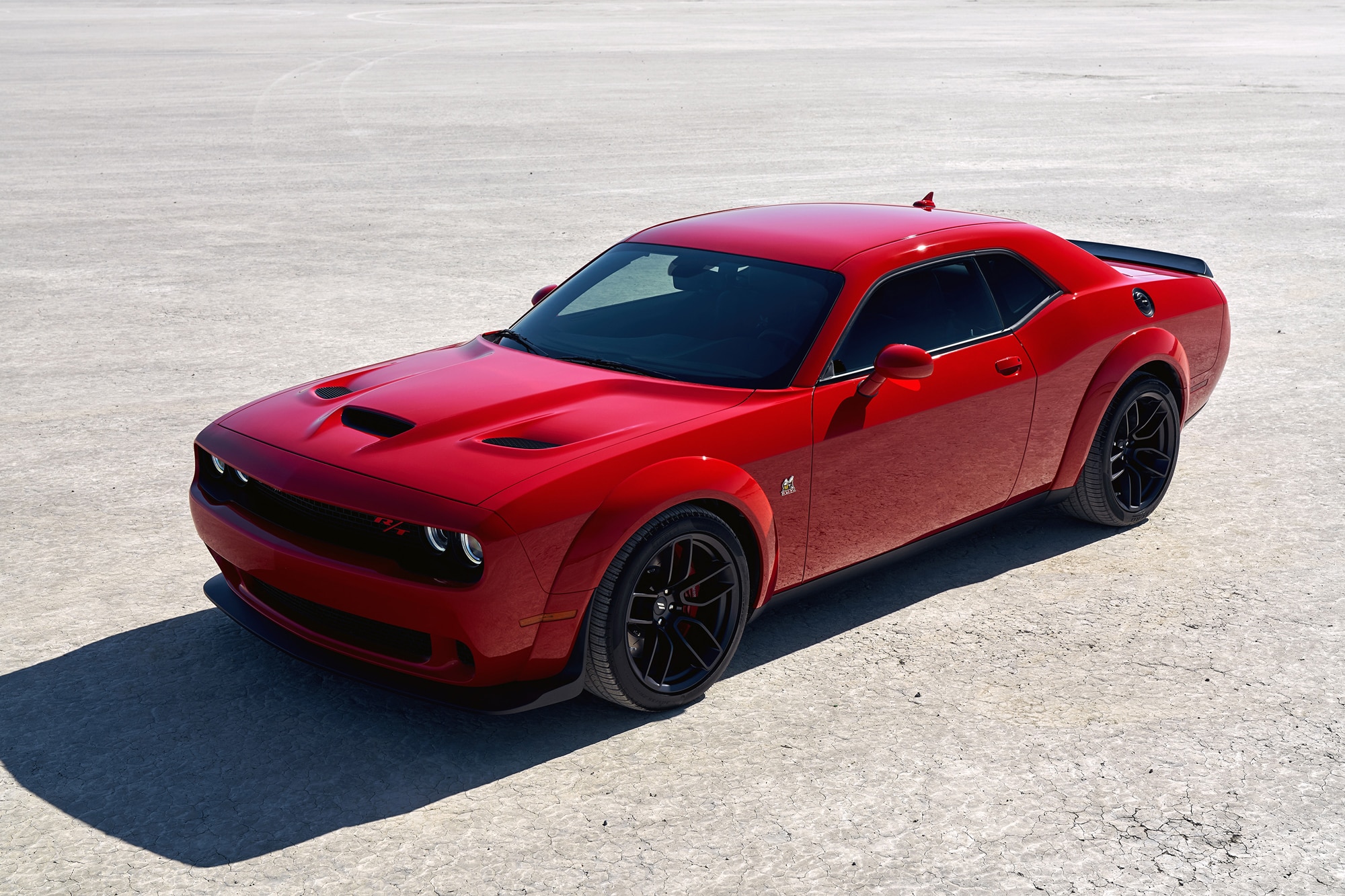What is a Muscle Car?
First realized in the 1960s, the idea of affordable, American V8 performance is still alive in new models today.
 Dodge
Dodge
A muscle car is traditionally a modestly sized coupe powered by an oversized V8 engine that delivers straight-line thrills with the gas pedal pinned to the floor and is affordably priced compared with more exotic performance fare.
The muscle car question has become a little more complicated in the modern era. Technology has advanced to the point where smaller engines can trump larger ones in terms of output, and four-door sedans have occasionally pushed their way into the conversation. The long-held definition still echoes through the industry, though, with today's muscle cars channeling the styling, attitude, and V8 rumble of their ancestors.
Mustang, Challenger, Camaro: The Holy Trinity of Modern Muscle Cars
The Ford Mustang, the Dodge Challenger, and the Chevrolet Camaro represent the modern versions of three golden-era muscle-car performers with roots dating back to the 1960s. Today, each model features at least one available V8 engine, a long list of available performance upgrades (suspension, aerodynamics, differentials, brakes), and a range of models intended to satisfy casual fans and hardcore enthusiasts alike.
These vehicles have also improved on the original muscle-car template to include new features that expand their audience and capabilities. For example, some versions of the Challenger are available with all-wheel drive. At the same time, the Mustang and the Camaro each offer an optional turbocharged, four-cylinder engine that would shame the eight-cylinder units found in older models in terms of horsepower.
What Was the First Muscle Car?
Going by the big-engine-in-a-smallish-car definition, it's generally accepted that the 1964 Pontiac GTO was the first muscle car in American showrooms. The GTO was a parts-bin special that snuck onto the streets in defiance of General Motors's ban at the time on large-displacement V8 engines being sold in anything other than full-size models. Using the basic Pontiac Tempest mid-size coupe as a foundation, the GTO was put together in secret by execs at the company determined to compete for the dollars of young enthusiasts. It wasn't long before other automakers began to copy the GTO concept, jumping on the bandwagon with V8-powered coupes and kickstarting a nearly decade-long fixation with high-horsepower hardware.
Other equally intriguing V8-powered models helped set the tone before the GTO's arrival. Specifically, the 1949 Oldsmobile Rocket 88 and the 1955 Chrysler 300 also delivered strong V8 performance, albeit in larger packages.
Is the Corvette a Muscle Car?
The Chevrolet Corvette might have enjoyed its share of glory during the classic muscle car era (including a stint where it offered big block power under its hood), but its origins lie elsewhere. Originally intended as a foil for fun, two-seat European roadsters taking America by storm in the 1950s, the Chevrolet two-seater held onto its handling focus throughout much of its existence. Today, the Corvette's otherworldly performance capabilities elevate it above muscle car status, keeping it firmly in the sports car pantheon.
Written by humans.
Edited by humans.
 Benjamin Hunting
Benjamin HuntingBenjamin Hunting is a writer and podcast host who contributes to a number of newspapers, automotive magazines, and online publications. More than a decade into his career, he enjoys keeping the shiny side up during track days and always has one too many classic vehicle projects partially disassembled in his garage at any given time. Remember, if it's not leaking, it's probably empty.
Related articles
View more related articles